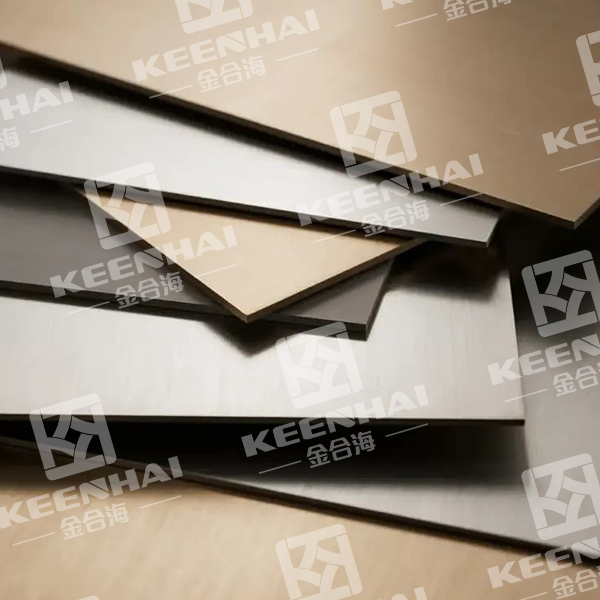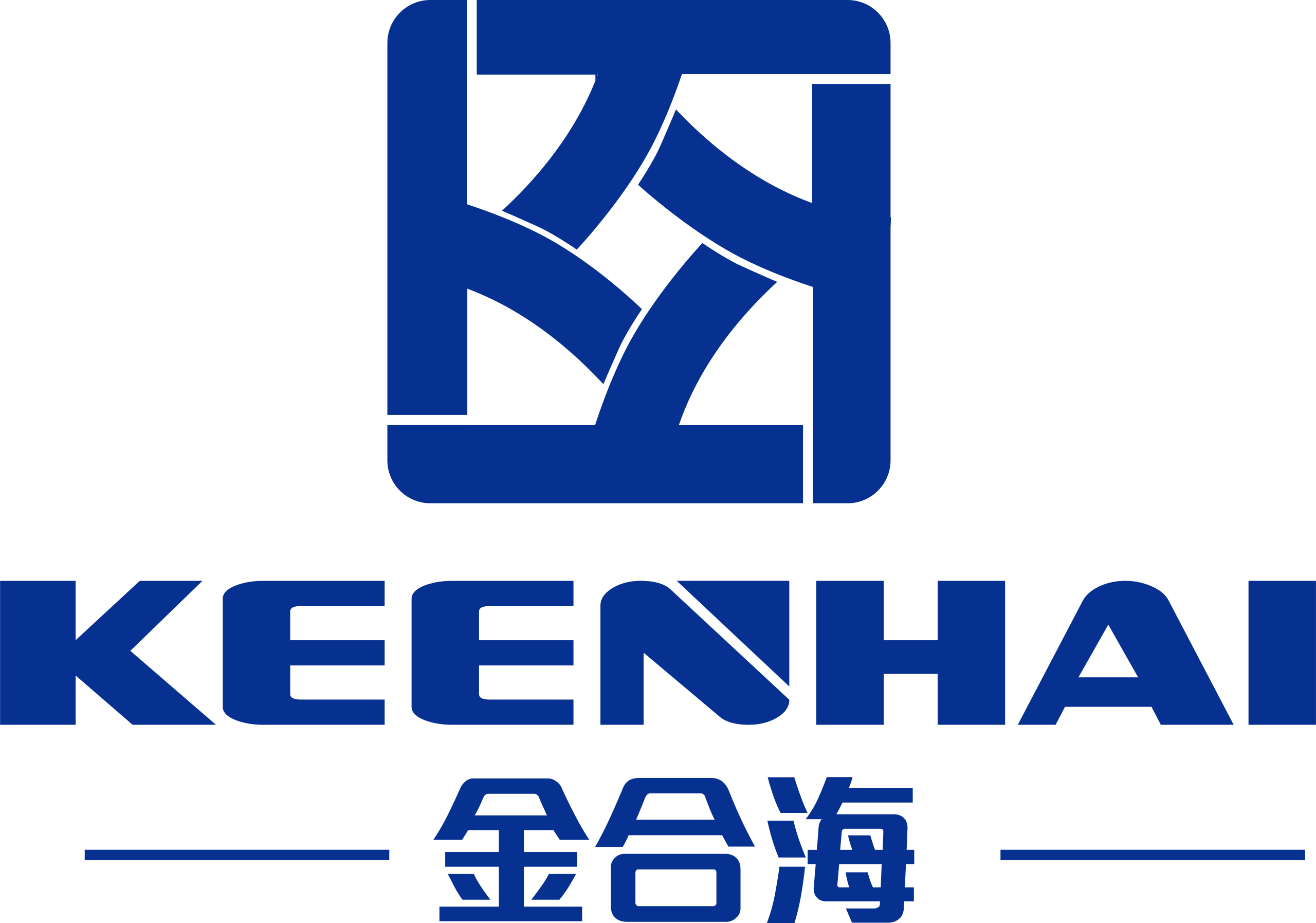Aluminum, steel, and inox differ significantly in weight, strength, and maintenance. Aluminum is flexible and lightweight, steel provides rigidity but requires coatings, and inox delivers high strength with natural corrosion resistance. For designers and engineers, inox panels and sheets allow for safe, durable, and low-maintenance solutions in both commercial and residential applications, from decorative façades to high-traffic kitchen surfaces.
1. Overview of Materials
1.1 Composition and Key Properties of Aluminum
Aluminum is a lightweight, corrosion-resistant metal primarily composed of aluminum (Al), with small amounts of silicon, iron, copper, and magnesium added to improve strength and machinability. It has a density of about 2.7 g/cm³, which is roughly one-third the weight of steel, making it ideal for applications where weight savings are crucial, such as aircraft, vehicle frames, or modern building facades. Aluminum naturally forms a thin oxide layer that protects it from corrosion, which is why it’s often used in outdoor architectural panels, window frames, and decorative elements. Its workability allows for cutting, bending, and anodizing, giving designers flexibility in creating sleek, durable finishes.
1.2 Composition and Key Properties of Steel
Steel is an iron-carbon alloy that can include small amounts of manganese, silicon, and other elements to enhance mechanical properties. Its density is about 7.85 g/cm³, significantly heavier than aluminum, but it offers higher tensile strength and rigidity, which is why it’s commonly used in structural frameworks, bridges, and industrial machinery. Steel is prone to rust if left unprotected, but coatings like galvanization or painting extend its lifespan. Its thermal conductivity, magnetic properties, and machinability vary by grade, allowing engineers to choose specific steel types for load-bearing structures, pipelines, or reinforcement bars.
| Материјал | Density (g/cm³) | Tensile Strength (MPa) | Отпорност на корозија | Заеднички апликации |
|---|---|---|---|---|
| Aluminum | 2.7 | 90–310 | Natural oxide layer, anodized coatings | Aircraft panels, facades, windows |
| Steel | 7.85 | 400–550 | Requires coating for corrosion protection | Bridges, beams, industrial machinery |
| Material Inox | 7.75–8.0 | 520–750 | High corrosion resistance, chromium-nickel content | Kitchens, elevators, decorative panels |
1.3 Composition and Key Properties of Material Inox
Material Inox, or stainless steel, is a chromium-rich alloy known for exceptional corrosion resistance and mechanical strength. Typical grades include 304 и 316, with chromium content around 16–20% and nickel between 6–14%. This composition allows it to resist oxidation even in humid, coastal, or chemical-exposed environments. Material inox is widely used in architectural cladding, kitchen appliances, and decorative panels because it combines strength, durability, and aesthetic versatility. For example, stainless steel sheets are often installed in luxury hotels for elevators and wall panels, providing a sleek, reflective finish that maintains integrity over decades. Its versatility also extends to SS steel plates for industrial components, making it a go-to material where both performance and appearance are critical.
Experience from construction sites shows that installing stainless steel panels properly ensures not just a polished look but also long-term durability, resisting scratches, dents, and environmental wear. By choosing the right grade and finish, designers and engineers can achieve both structural reliability and high visual impact in one material.

2. Mechanical Strength Comparison
2.1 Tensile and Yield Strength of Aluminum, Steel, and Inox
When evaluating structural applications, understanding tensile and yield strength is critical. Aluminum alloys typically have tensile strength between 90–310 MPa and yield strength around 35–275 MPa, making them suitable for lightweight structures but less ideal for heavy-load applications. Steel, on the other hand, offers tensile strength of 400–550 MPa and yield strength around 250–450 MPa, providing superior load-bearing capacity for bridges, beams, and industrial machinery. Material inox, or stainless steel, outperforms both in many cases, with tensile strength of 520–750 MPa and yield strength of 215–550 MPa, combining high corrosion resistance with robust mechanical performance.
| Материјал | Tensile Strength (MPa) | Yield Strength (MPa) | Typical Applications |
|---|---|---|---|
| Aluminum | 90–310 | 35–275 | Aircraft frames, decorative panels |
| Steel | 400–550 | 250–450 | Structural beams, machinery |
| Material Inox | 520–750 | 215–550 | stainless steel sheets, elevators, kitchen panels |
This comparison highlights why inox is preferred in projects where strength and durability must coincide with aesthetic appeal. For instance, installing inox panels in hotel elevators or commercial kitchens ensures they maintain structural integrity under heavy use while offering a polished, modern finish.
2.2 Hardness and Impact Resistance
Hardness and impact resistance further differentiate these metals. Aluminum’s softer nature makes it easy to work with but prone to dents under force. Steel offers higher hardness but may corrode without protective coatings. Material inox balances hardness and resilience, typically reaching Brinell hardness values of 140–200 HB depending on the grade, with excellent impact resistance, especially in duplex or martensitic variants.
Practical applications show the advantage clearly:
-
Aluminum panels are ideal where weight is critical and minor dents are acceptable.
-
Steel sheets perform well in heavy-load structures but require painting or galvanization in outdoor environments.
-
Material inox maintains both form and finish even under frequent contact, abrasion, or minor impacts, which is why designers often choose SS steel plates for high-traffic areas in hotels, restaurants, and public buildings.
By considering both tensile strength and hardness, engineers can match materials precisely to load, usage, and aesthetic requirements, ensuring safety and longevity while minimizing maintenance needs.
3. Corrosion Resistance and Environmental Performance
3.1 Aluminum Corrosion Behavior and Protection
Aluminum naturally forms a protective oxide layer when exposed to air, which slows down corrosion and makes it suitable for many outdoor applications. However, in marine or highly acidic environments, aluminum can undergo pitting corrosion if the protective layer is compromised. To enhance durability, anodizing, powder coating, or painting is commonly applied. For example, aluminum cladding on building façades often uses anodized finishes to maintain aesthetics while resisting rain, humidity, and UV exposure. Regular cleaning and inspection help preserve the oxide layer and prevent localized corrosion over time.
3.2 Steel Corrosion Issues and Treatments
Steel is strong but highly susceptible to rust, especially when exposed to moisture, oxygen, or salts. Untreated steel forms iron oxide, which can weaken structures over time. To prevent this, engineers often:
-
Apply protective coatings such as galvanization, epoxy, or powder coating.
-
Use stainless or weathering steel alloys with added chromium, nickel, or copper.
-
Perform routine maintenance, including cleaning and repairing scratches.
| Steel Type | Отпорност на корозија | Common Treatments | Applications |
|---|---|---|---|
| Carbon Steel | Low | Galvanization, painting | Beams, industrial machinery |
| Weathering Steel | Средно | Self-forming oxide layer | Bridges, outdoor structures |
| Нерѓосувачки челик | High | Minimal maintenance | Kitchens, elevators, panels |
Even after coating, environmental conditions like high humidity or saltwater exposure accelerate corrosion, so choosing the correct steel type and applying proper protection is essential for longevity.
3.3 Material Inox Corrosion Resistance in Different Environments
Material inox, or stainless steel, excels in corrosion resistance due to its high chromium and nickel content. Grade 304 resists moisture and indoor pollutants, making it ideal for kitchen appliances and wall panels, while grade 316 adds molybdenum for superior protection in marine or chemical-exposed environments. For example, stainless steel sheets installed in coastal hotels maintain a polished, scratch-resistant surface despite constant exposure to salt-laden air.
Practical installation experience shows:
-
Choose the right grade based on environmental exposure.
-
Apply protective sealants only when required for high-contact surfaces.
-
Regularly clean panels with non-abrasive solutions to preserve shine and prevent minor surface corrosion.
Using material inox ensures that architectural and industrial applications not only last longer but also reduce maintenance costs, making it a reliable and aesthetically pleasing choice compared with aluminum or standard steel.

4. Weight and Structural Considerations
4.1 Density Comparison and Load-Bearing Implications
Weight plays a critical role in structural design. Aluminum has a low density of approximately 2.7 g/cm³, which makes it ideal for applications where minimizing load is important, such as aircraft frames, lightweight building panels, or movable furniture. Steel and material inox are significantly heavier, with densities around 7.85 g/cm³ and 7.75–8.0 g/cm³, respectively, providing superior load-bearing capabilities for structural beams, industrial machinery, and elevator frameworks.
| Материјал | Density (g/cm³) | Load-Bearing Capacity | Typical Uses |
|---|---|---|---|
| Aluminum | 2.7 | Moderate | Lightweight panels, aircraft, façades |
| Steel | 7.85 | High | Beams, bridges, machinery |
| Material Inox | 7.75–8.0 | High + Corrosion Resistance | stainless steel sheets, elevators, cladding |
Choosing the right material ensures that weight does not compromise structural safety. For instance, inox panels in high-rise buildings provide both strength and long-term corrosion resistance, unlike aluminum, which may deform under heavy structural loads, or untreated steel, which could rust over time.
4.2 Flexibility vs Rigidity Across Materials
Material selection also depends on flexibility versus rigidity requirements. Aluminum is lightweight and relatively flexible, allowing for bending and shaping without cracking, which is advantageous for curved façades or decorative installations. Steel provides high rigidity but limited flexibility, which is why it is preferred for load-bearing structures where dimensional stability is critical. Material inox offers a balanced profile, combining sufficient rigidity to support structural loads with enough flexibility to handle minor impacts or thermal expansion.
Practical installation steps for choosing materials based on flexibility:
-
Identify the expected load and stress points in your structure.
-
Evaluate environmental factors, including temperature changes and vibration.
-
Select the material that balances rigidity, flexibility, and corrosion resistance for the application.
Using SS steel plates in areas with heavy traffic or dynamic loads ensures long-term durability while maintaining structural integrity and aesthetic appeal. This approach is especially effective for commercial kitchens, elevators, or decorative panels in public spaces, where both performance and visual impact matter.

5. Cost and Maintenance Analysis
5.1 Material Costs and Lifespan
When comparing aluminum, steel, and material inox, initial cost and long-term value are key considerations. Aluminum is lightweight and easy to fabricate, often costing less upfront than inox, but its lower strength may require thicker panels for structural applications, slightly increasing total material use. Standard steel is typically inexpensive, but untreated steel is prone to corrosion, which can shorten its lifespan and increase replacement costs. Material inox, although more expensive initially, offers exceptional longevity, often exceeding 50 years in indoor or moderately exposed environments, reducing long-term maintenance and replacement expenses. Using premium sources like pvdstainlesssteel ensures high-quality stainless steel products that justify the higher upfront cost with durability and aesthetic appeal.
5.2 Maintenance Requirements and Surface Treatments
Maintenance needs vary greatly between materials. Aluminum requires minimal upkeep but may need periodic inspection in marine or industrial environments to prevent pitting. Steel requires regular coatings or galvanization, and scratches or damages must be repaired promptly to avoid rust. Material inox is remarkably low-maintenance due to its chromium and nickel content, which forms a self-protective oxide layer. For optimal longevity:
-
Clean surfaces with mild, non-abrasive detergents to remove grime or salt deposits.
-
Avoid harsh chemical cleaners that can compromise the passive layer.
-
Apply polish or protective coatings only for high-contact surfaces in commercial areas.
Stainless steel sheets и SS steel plates installed in commercial kitchens, hotel elevators, or decorative panels maintain their luster for decades with minimal effort. This combination of durability and low maintenance makes inox a cost-effective choice despite its higher initial price, especially for projects where aesthetics and performance are both critical.
In summary, when comparing aluminum, steel, and material inox, inox stands out for its superior corrosion resistance, mechanical strength, and long-term reliability. It combines the advantages of aluminum’s flexibility and steel’s rigidity while minimizing maintenance. For architects, engineers, and project owners, choosing high-quality stainless steel products from pvdstainlesssteel ensures both structural integrity and premium aesthetics across a wide range of applications, from commercial kitchens to elevator panels and decorative building façades.






